At our Airbnb accommodations close to Granada’s centre, the cleaning lady greeted us clad in a pharmacist’s white coat and full make up, as if she were off to make rounds at the hospital. This impression was underlined by her clipboard and pen, to take our passport details. MLH immediately dubbed her ‘La Senora Doctora’. She had done a fabulous job on the flat. All the female cleaning staff in Spain were well-presented. It was odd to see a woman with bright red lipstick and hair in a stylish ponytail clearing out the street rubbish bins.
From our sparkling flat, we could look over the city to the hillside Alhambra complex on the other side of the river, and beyond it the snow-covered Sierra Nevada peaks. You could appreciate why the Moors built their capital fortifications here. It would be hard to capture. In fact, Granada was the last Moorish area to be taken back by the Christians in that famous year – 1492, and it took Ferdinand and Isabella, the Catholic Monarchs, ten years to get the last Muslim Caliph to surrender. Queen Isabella signed the contract with Christopher Columbus, allowing him to set off for ‘India’ in Santa Fe, close to Granada. Looking at the statue in the main square commemorating this, I wondered: what if she’d been in a different mood that day? There’s a big debate in Spain about the refugee and economic migrants coming in from Africa, most of them Muslim and Arabic-speaking. This time, they are not arriving as conquerors. A poster hanging from a balcony said: “Illegal immigration began on October 12th, 1492” (the day Christopher Columbus landed in what became the Americas). Touché.
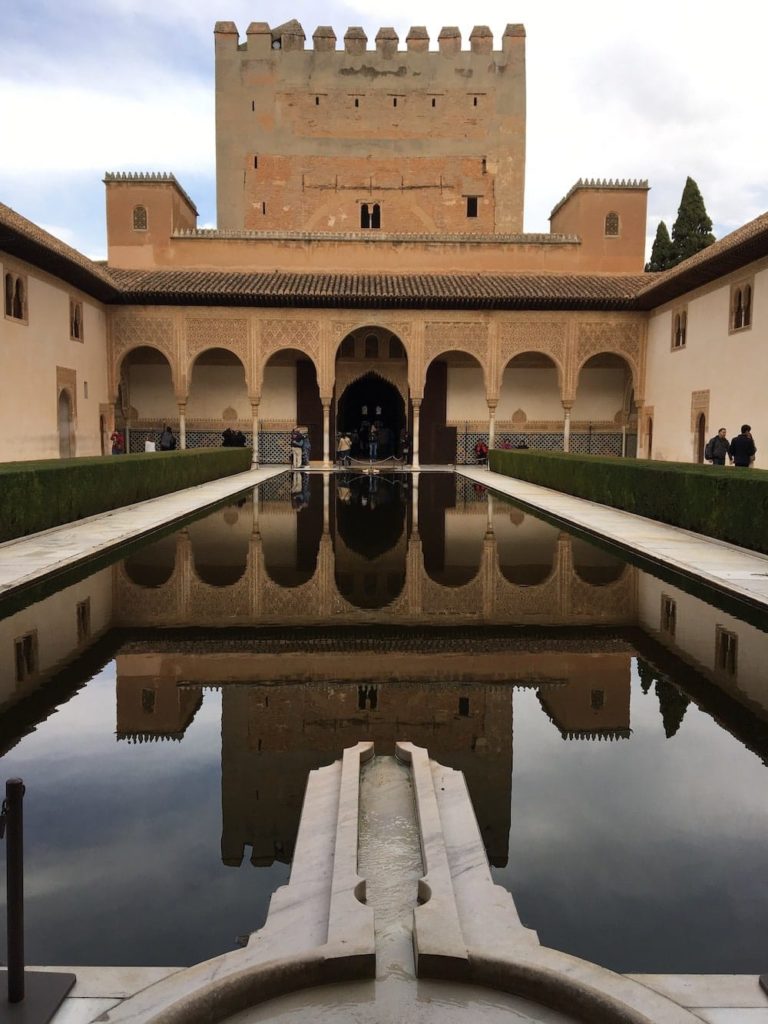

You have to book tickets in advance to get into the Alhambra palaces, so we had a day to do a walking tour of the city and do some homework on this extraordinary place, where the Moors who captured most of Spain from Morocco built a citadel and sumptuous palaces and gardens here over their 700-year settlement, and the Christian kings retained most of it, meaning it’s one of the best examples of Islamic art and architecture in the world. There are also examples of Moorish decoration everywhere in the city – key-hole doorways, plaster work, carved wooden doors and wooden window screens and the distinctive ceramics of Granada, which traditionally are only decorated in three colours: white, green and blue.
We walked up to Alhambra early in the morning the next day, as the bells of the Royal Monastery of St. Jerome next door rang for service. We didn’t leave until they closed at sunset, there was so much to see and take in: palaces decorated with carved plaster, geometric tiles, courtyards with fountains, gardens with flowers still blooming, orange trees and pools, irrigation systems and cisterns, poetry and Islamic texts. MLH was fascinated by the Arabic inscriptions, especially as Granadian Arabic was a dialect which developed from classical Arabic, and so the meaning of street names can be worked out, but with effort. (For example: ‘Alhambra’ (The Red One) would be ‘Al Hamra’ in classical Arabic. In Southern Spain you are not far from North Africa in distance, culture and landscape. Another Muslim dynasty (the Fatimids) also invaded Egypt, and its architecture, religion and culture blended with that of the new rulers. It was perhaps this and the Islamic texts running around his head as they had run around the palace walls, the heady scent of jasmine blossoms, the singing of Carmelite nuns superimposed on the Arabic chatter of Moroccan street vendors, which unlocked memories in MLH so that night that he dreamt he was walking in the area in which he grew up near Cairo.
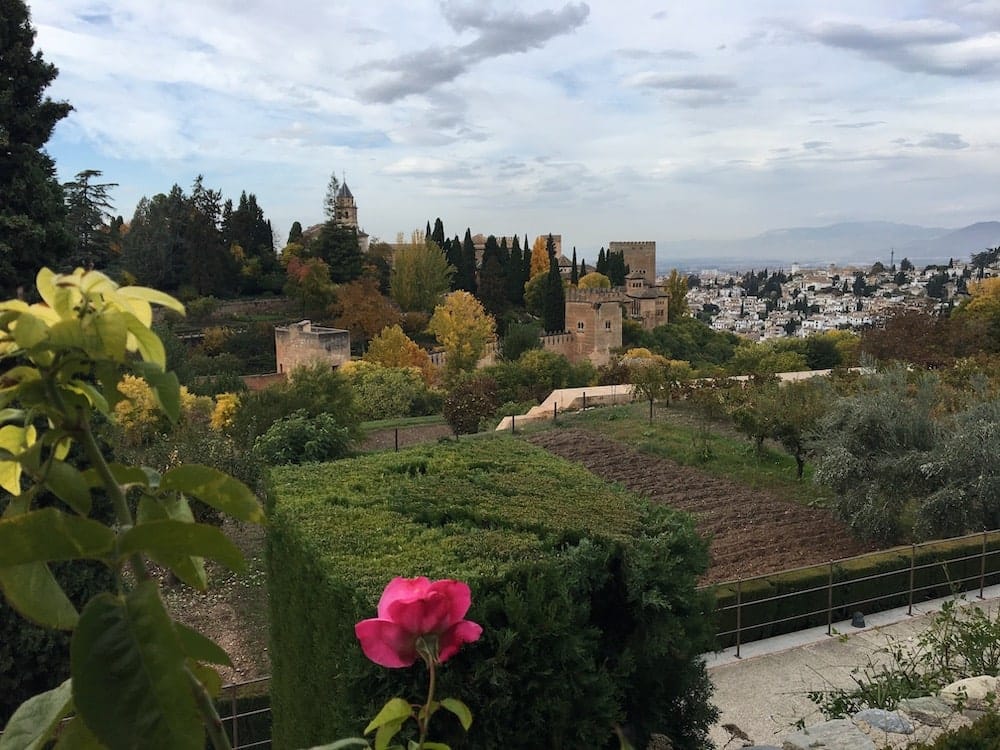
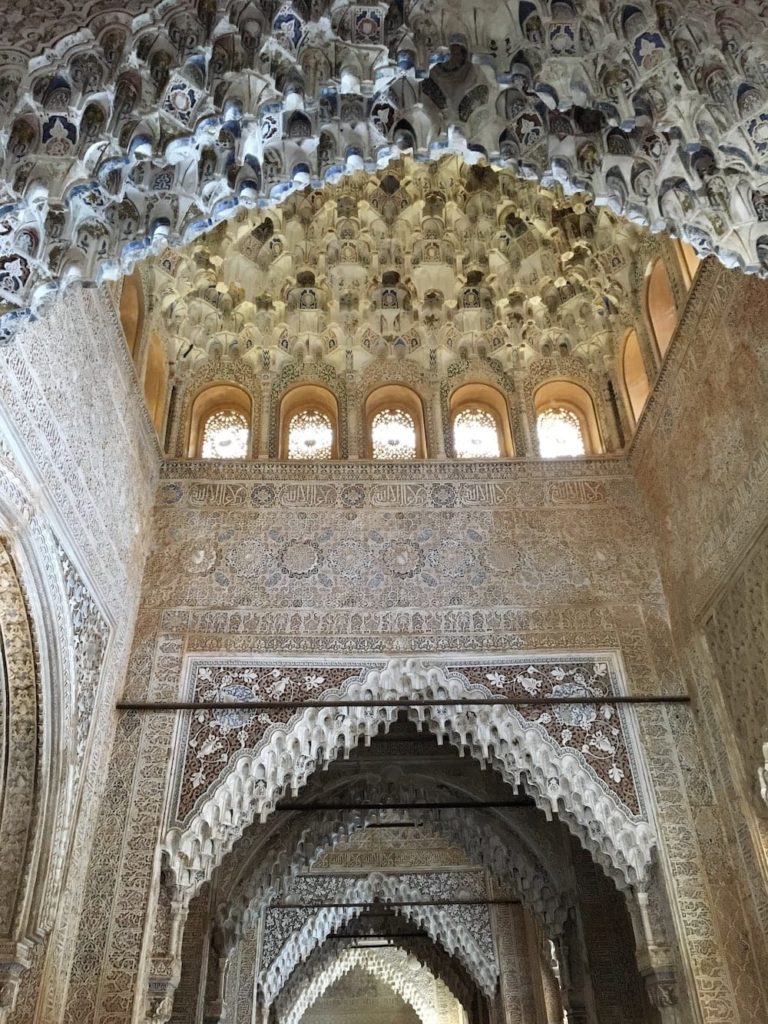
To mix the ‘salad’ in MLH’s brain even more, the next day we climbed into the old Albaicin district of the city, then to Sacromonte, to see the hill houses dug out on the other side of the valley from Alhambra. The land is dry and stable, and people have used the hills for homes for centuries and still do. The ones we visited in the Cave Museum were originally dug in the 15th century by gypsies, Moors and Jews who had been outcast from the now Christian Granada. In fact, historians think that the intermingling of those three cultures resulted in flamenco music and dance. MLH had a physical negative reaction to flamenco and couldn’t bear to watch it or hear the music, even though there are tones of Arabic music in it, and he loves Spanish guitar music. He said it was too jerky and violent. It is obviously an art form born from the anguish of exclusion and exile. Consequently, we didn’t go to one of the touristy flamenco shows. Instead, we watched very good flamenco performers busking in Seville later. The difference between the two hillsides on either side of the Darro River Valley could not be more striking: Alhambra sits amid lush, green woods and cultivated gardens. The Sacromonte side, which gets far more sun, cannot sustain more than some cactus plants and olive trees. However, there is water to grow herbs and catch fish, and the cave-dwellers engaged in sheep-rearing, wool production and weaving, basket work and iron work.
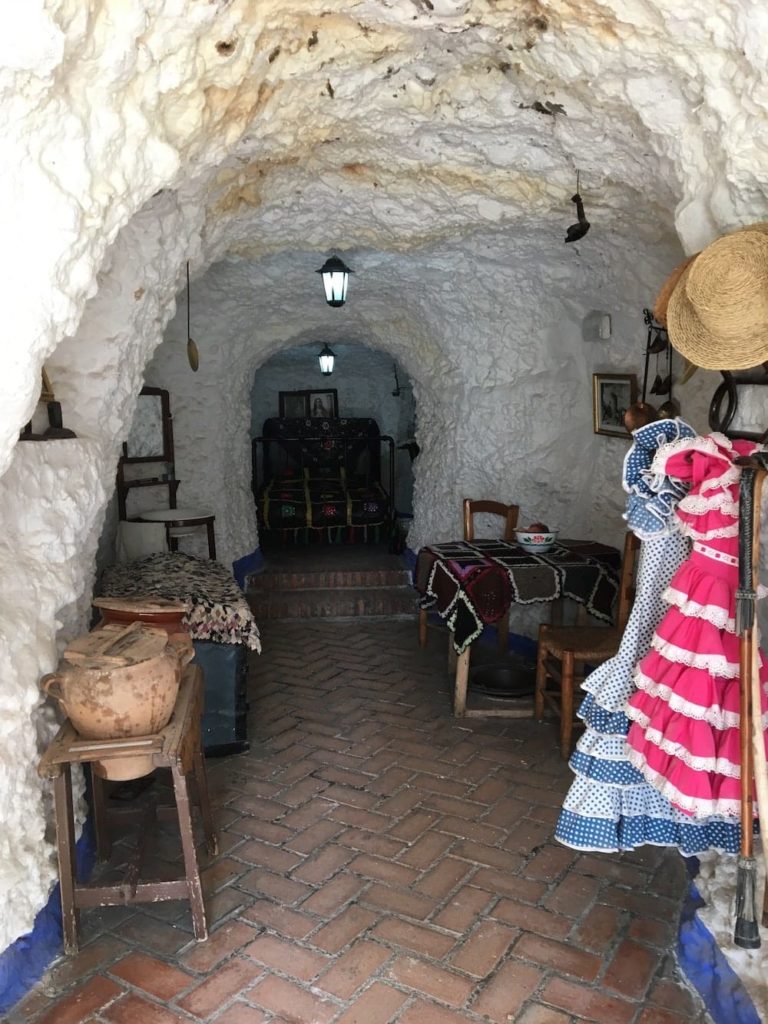
We thought we’d seen intense culture-layering in Granada. Nevertheless experiencing the Cathedral Mosque of Cordoba, about an hour’s drive from Granada, was forceful. Here there’s a huge mosque complex built by the Moors when they ruled the area. There’s a traditional Islamic courtyard with a fountain for ablutions, and a square mosque with distinctive red and white arches and columns, row after row. Islamic texts and decorations and carvings are still on the walls. Then at the centre of this there is a Gothic cathedral with paintings, gold, heavy wood choir stalls. The contrast couldn’t be greater. We used an audio guide to tour and then spent another hour walking around simply trying to absorb it all. The building operates as a cathedral but is a huge draw for tourists from all over the world, and especially for Muslim tourists. We saw groups of them visiting with tour guides. Spanish Muslims have called for the right to worship there. Surprisingly, security was not tight, though there were CCTV cameras, and we were told that there are many plain clothes police personnel on duty.
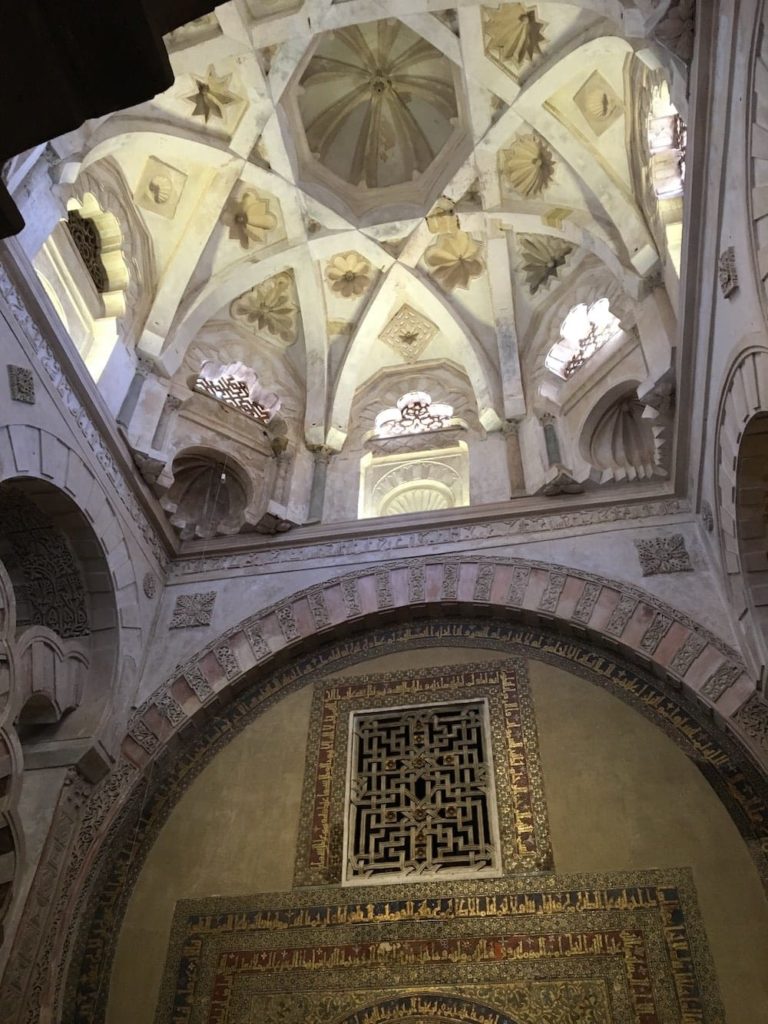
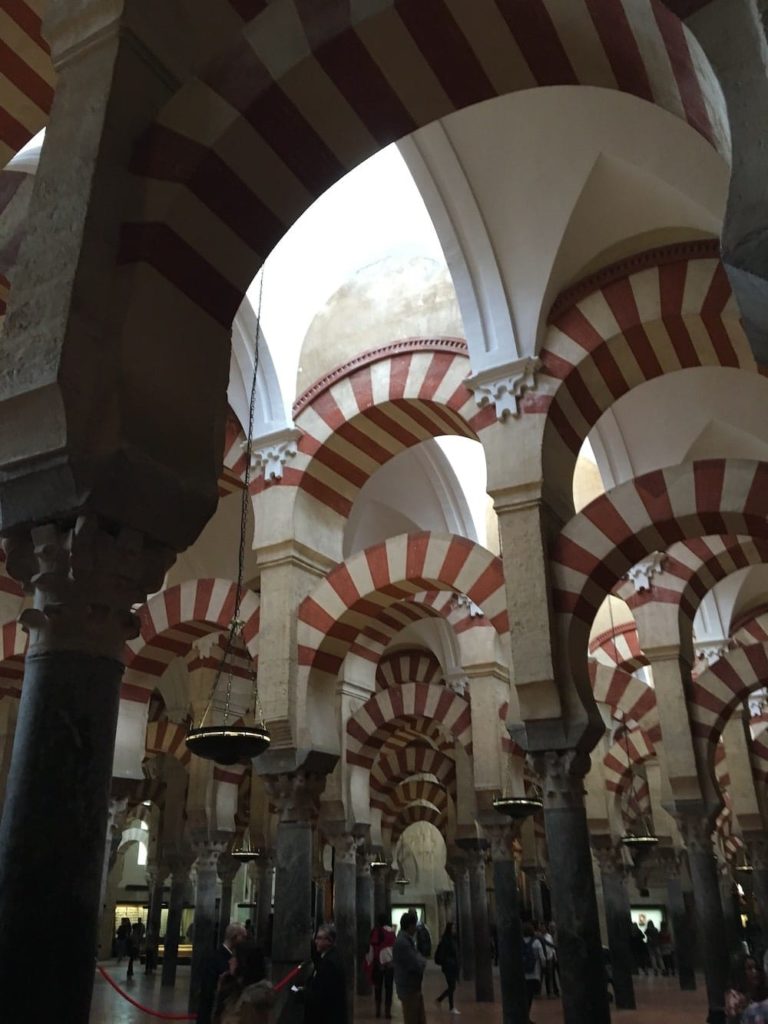
We visited on a Saturday and in one of the side-chapels a smart wedding was underway. All the ladies were in fascinators and faux-fur stoles (it was mid-November and the church is dark and chilly). Thrillingly, the mother-of-the-bride was wearing a traditional Andalusian headdress (see photo). The bride and groom left through the complex arch and were strewn with rose petals and later we saw them having their photos taken at the picturesque gardens of the Alcazar citadel.
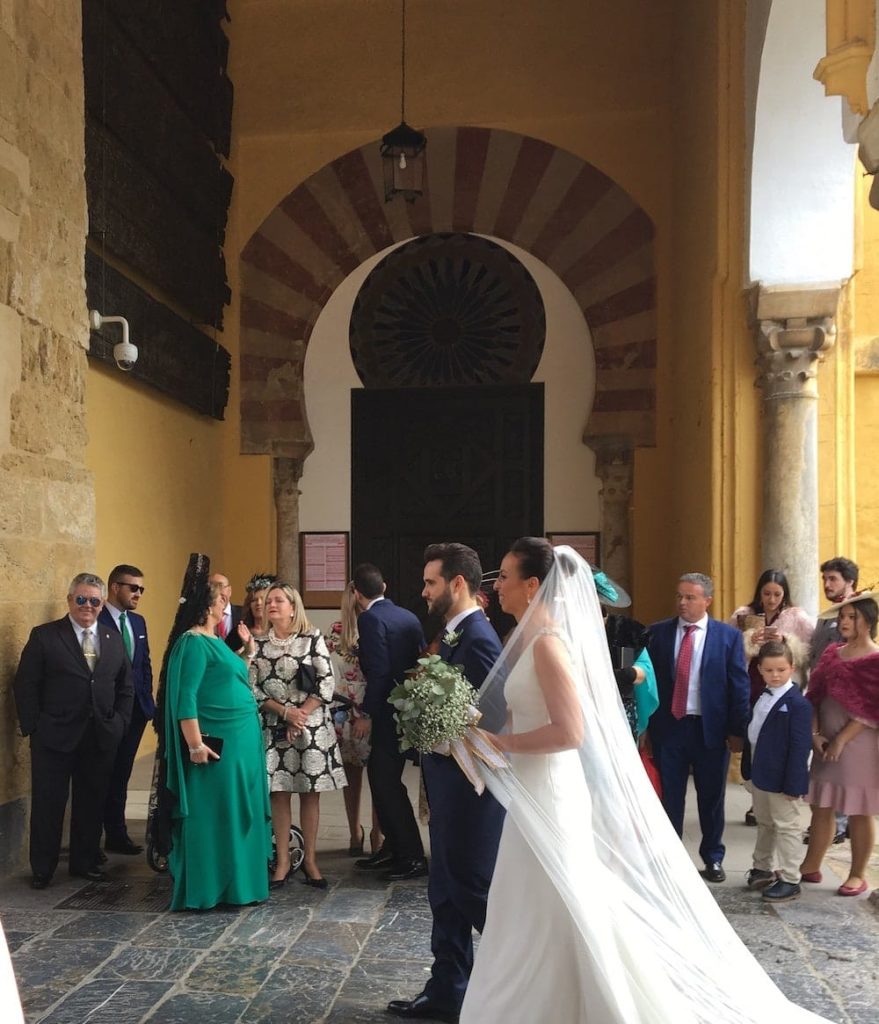
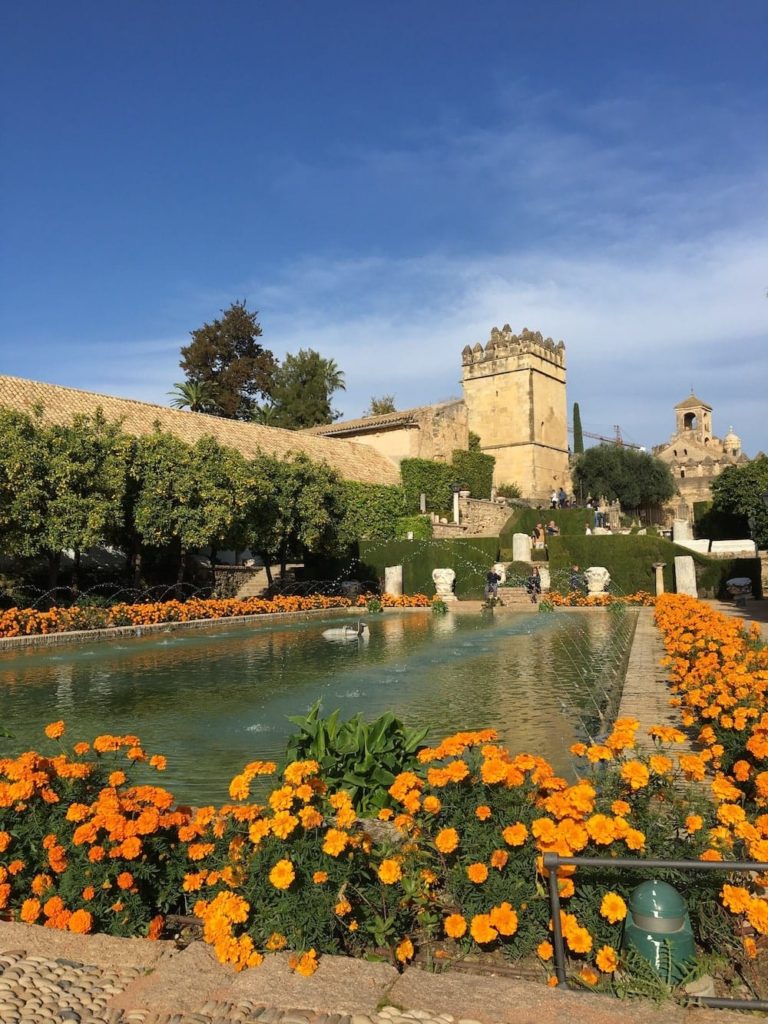
Nothing covers the Guadalquivir River flowing through Cordoba and it flows wide and fast. You can still see the remains of mills on the banks, which were used in Roman times. The city has most impressive complete Roman floor mosaics which were recovered from archeological sites. Near our accommodations on the outskirts of the city, Andalusian horses from the Royal Stables exercised in a paddock. They are beautiful animals.
So far, our plan of avoiding winter by working our way South through Spain had worked well, but it was raining as we left Cordoba for Seville, the jewel city of Spain’s Golden Age from the 15th to 18th centuries, when attention and trade turned West, to America.